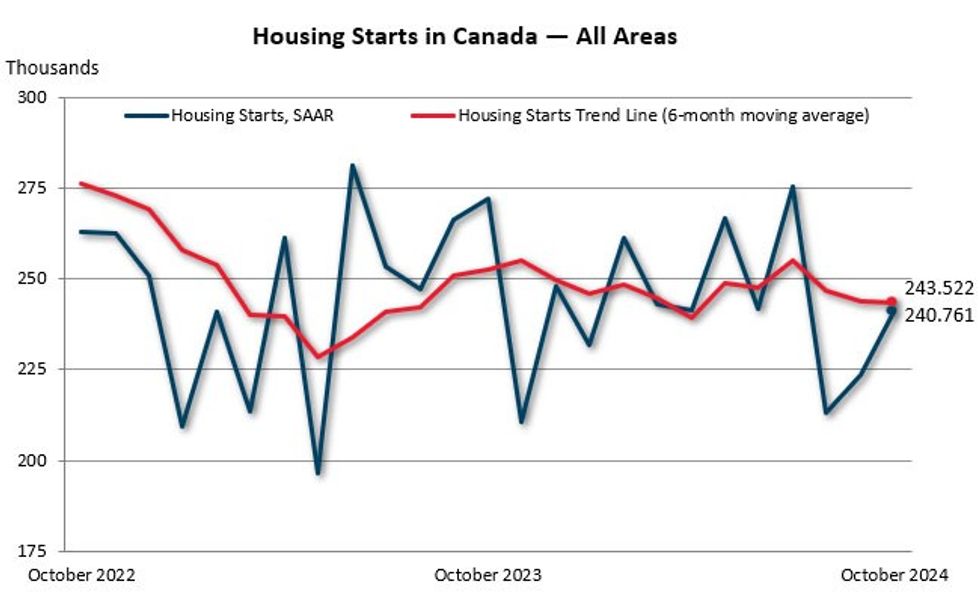After monthly housing starts dropped 22% on a seasonally-adjusted basis in August, the last two months have seen incremental rises, with housing starts increasing by 5% in September and now 8% in October.
According to the Canada Mortgage and Housing Corporation (CMHC), housing starts across Canada shifted up from 223,391 units in September to 240,761 units this October, though the six-month trend remains "flat" at 243,522 units.
And in urban centres, where affordability conditions are most dire, year-to-date housing starts went "statistically unchanged" from this time last year, with 188,567 actual, not seasonally-adjusted, housing starts clocking in at 188,567 units between January and October 2024, compared to 187,722 units in 2023.

But some regions are fairing better than others, CMHC explains.
“Actual year-to-date housing starts are similar to last year, but we continue to see higher activity in the Prairie provinces, Québec, and the Atlantic provinces, while Ontario and British Columbia have seen declines in all housing types," says CMHC’s Chief Economist Bob Dugan.
More specifically, actual year-to-date housing starts in Montreal were up 12% in October, showing some recovery from historically low new home construction in 2023, reports CMHC. As well, the Atlantic provinces (NL, PEI, NS, and NB) saw a collective 31% increase compared to 2023, and the Prairies (MB, SK, and AB) were up 27% year over year.
In contrast, Ontario and BC were down 18% and 11% in actual year-to-date housing starts compared to 2023 respectively, though on a monthly, seasonally adjusted basis, their biggest cities of Toronto and Vancouver saw some encouraging action, posting increases of 44% (from 20,496 to 29,547 units) and 30% (from 23,444 to 30,412 units), respectively.
But Dugan points out that, despite these increases, overall, we are still critically shy of meeting housing targets necessary to restoring affordability.
"The increases in the monthly SAAR (seasonally adjusted annual rate) in Toronto and Vancouver are a promising sign for Ontario and British Columbia, as they drove the national SAAR increase in October," says Dugan. "Despite these results, we remain well below what is required to restore affordability in Canada’s urban centres."
- High Interest Rates Resulted In 30,000 Fewer Housing Starts In 2023: CMHC ›
- Over 60% Of Builders See Their Housing Starts Dropping By Half In 2024 ›
- Canadian Housing Starts Drop 22% In August, Undo July Gains ›
- Ontario Homebuilding Lagged Behind Other Provinces For 6 Years ›
- Regulatory Change To Speed Up Office Conversions Enacted ›


















